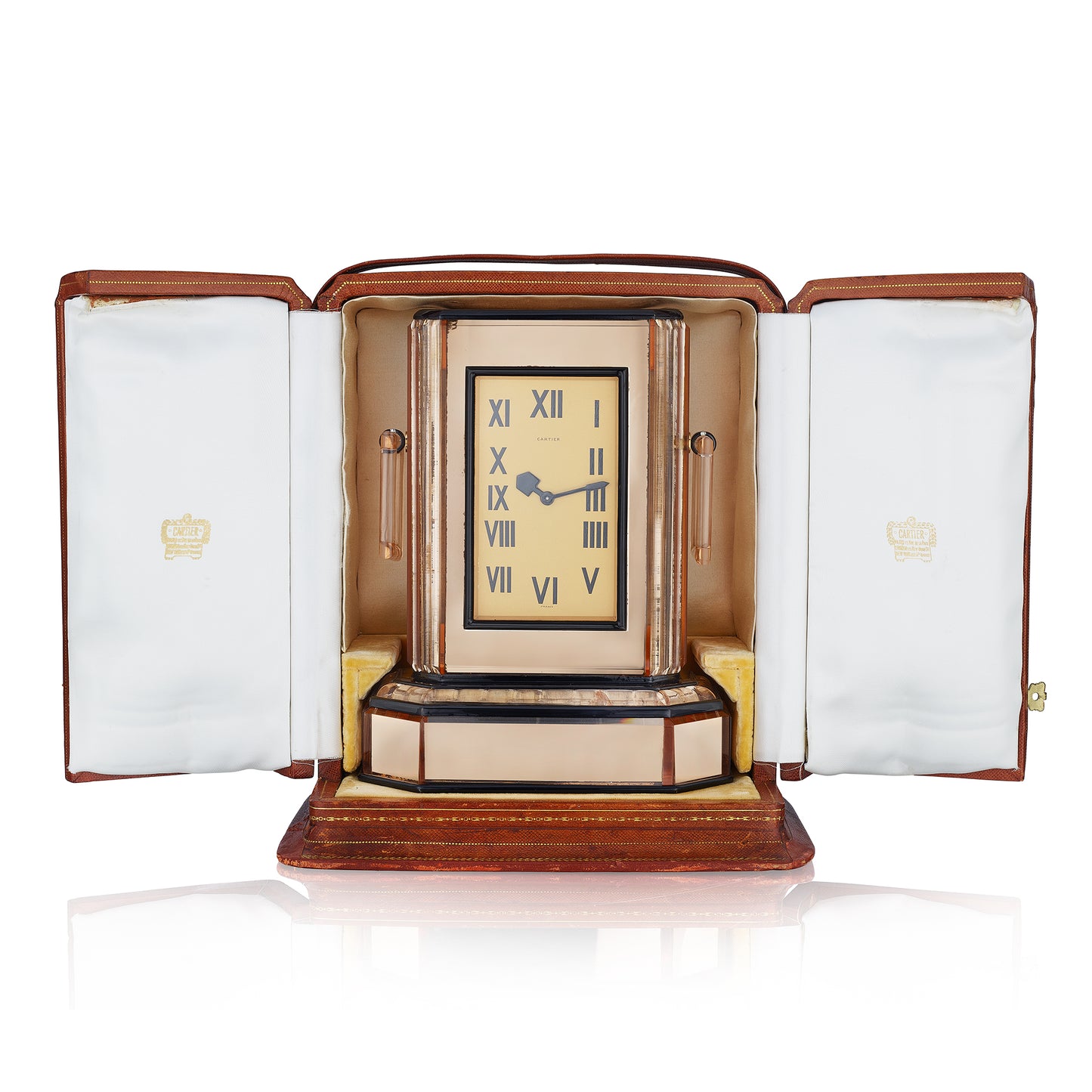Art Deco Tinted Looking Glass Clock by Cartier, Paris, 1931
Art Deco Tinted Looking Glass Clock by Cartier, Paris, 1931
A clock A clock composed of tinted glass panels centering a black enamel frame with a clock face set with roman numerals and black steel hands, with two glass handles on the sides and glass rods at the corners, the base alternating tinted glass and black enamel; Movement by European Watch and Clock Co in the original Cartier fitted case
- Face signed Cartier
- Measurements: 8 inches
Additional cataloguing
Certification
Cartier Certificate of Authenticity GE2001-259 dated 10/15/2013 stating the Mantle Clock with Tinted Looking Glass is Cartier Paris, 1931
Biography
Cartier was founded in Paris in 1847 by Louis-François Cartier. His three grandsons, Louis, Pierre, and Jacques, built the house into a famous international jewelry empire serving royalty, Hollywood stars, and socialites. Cartier has created some of the most important jewelry and objects of art of the twentieth century with many iconic designs such as mystery clocks, Tutti Frutti jewelry and the Panthère line. In 1983, The Cartier Collection was established with the
objective of acquiring important pieces that trace the firm's artistic evolution. Today, Cartier has 200 stores in 125 countries.
Significance
The 1920s and 1930s were a time of great technological advancement on land, on sea, and in the sky. The excitement of new technology was reflected in the bold streamlined shapes of the late Art Deco, known as Art Moderne. Coming off the elaborate decoration of previous decades, the straight lines of the Art Deco were modern and shocking. The Art Moderne period even more so, as artists associated with the Union des Artistes Modernes (UAM), such as Jean Puiforcat and Jean Fouquet, eschewed extraneous decoration in favor of austere and inventive pieces. Cartier was most recognized in this period for elaborate all-white diamond confections of great beauty and presence, but occasionally, the designers showed their understanding for what was happening on the design forefront with pieces that were stripped down, and inspired by machines, as something from a UAM designer might be.
This clock has a subtle design utilizing austere mirrored surfaces that reflect light, much like the polished surfaces of a metal train or machine built for speed. The beautifully illuminated surface here reflects a warm amber glow. The use of glass batons to cover the mirrored surface elevates this clock to a work of great technical skill that is iconically Cartier. Deceptively simple, this technique was patented by Cartier in 1929 for use on “objects of luxury, for which one seeks certain qualities of presentation and elegance.”
The patent goes on to say, “The advantage of the invention, as it is understood, combines the strength of metal with the decorative and shining qualities of the glass.” By 1930s, electricity was becoming common in the home, and decorative luxury objects were popular. This clock was designed with that streamlined simplicity in mind, but the use of mirrored batons was a technical achievement designed to catch and play with light. This unusual clock would be a beautiful and shining addition to any home.






